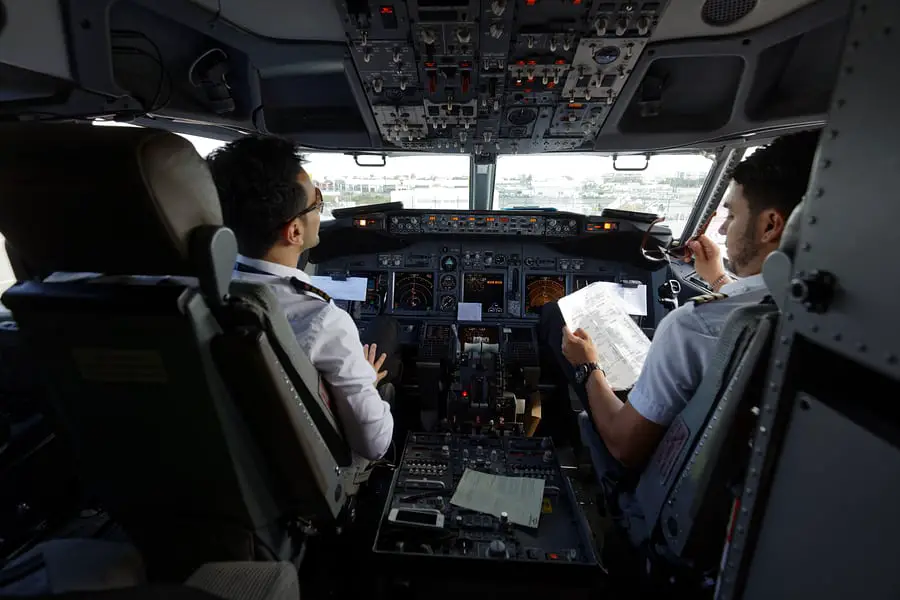Table of Contents
*This post may contain affiliate links. As an Amazon Associate we earn from qualifying purchases.
Challenging, rewarding, exciting – these are just a few of the terms used to describe the life and career of an airline pilot.
Since planes were invented, they’ve revolutionized travel and changed the way humans think about getting from one place to another. Air is considered one of the safest and quickest forms of travel, and has even led to the emergence of various sub-industries.
Pilots transport hundreds and thousands of passengers a day, deliver freight, and even provide a valuable role in national defense. Many people have considered this line of work, but are unsure about where and how to start.
How long does it take to become an airline pilot? What is required? Can anyone transition into this line of work? These are just a few of the questions people have when they consider making their career in the cockpit.
When it comes to how to become a commercial airline pilot, there are several key steps involved.
Pilots need the right certifications and proper experience. A combination of study, training, and supervised experience can help anyone become a successful and skilled airline pilot.
How to Become an Airline Pilot: The First Steps
Piloting a plane is a huge responsibility. Failure to handle the job properly can put the pilot, their passengers, and people below in danger.
When a prospective pilot is first starting out, the initial training period provides them with the basic skills they need.
The first step is gaining a private pilot certificate.
To do this, a person must train in a single-engine plane under the guidance of a trained professional. This helps them learn the fundamentals and become comfortable with the basics.
Just like piloting a vehicle, piloting a plan requires a person to train until the basic aspects of the task become second nature. Just as automobile drivers know how to use their vehicle’s features and react in questionable situations, pilots can learn these important skills as they pursue their private pilot certification.
Once a pilot has the basics down, the next step is to expand their skillset.
A person with a private pilot certification will then pursue their instrument rating and multi-engine rating. These credentials function like endorsements on a commercial driver’s license. They allow the pilot to fly under Instrument Flight Rules, in various types of weather, and even to handle larger and faster planes.
Earning a Commercial Pilot Certificate
Once a person has received the proper pilot training to earn them their private pilot certificate and the necessary ratings, the next step is to earn a commercial pilot certificate.
Airline pilot requirements can vary depending on the company, location, and type of plane.
However, almost all pilots are expected to show high standards of control and maneuverability while they’re behind the controls.
Beyond this, there is the certified flight instructor certificate. This step allows a person who has completed all three previous certifications (multi-engine, single-engine, instrument) to gain the hours behind the controls they need in order to get paid to fly.
Gaining Experience as a Pilot
After earning the appropriate certifications that show a pilot is skilled at the fundamentals and competent flying under various conditions, the next step is to gain experience.
Experience is vital for pilots. They must show prospective employers that they’ve been able to fly safely on multiple occasions in the past.
Airports can encounter tremendous amounts of liability if they hire pilots who haven’t proven themselves in real-world situations. For employers, experience is as crucial to onboarding new talent as the certifications themselves.
The Airline Transport Pilot certificate requires pilots to have a minimum of 1,500 hours of experience to their name. While this may seem like a lot, it is considered necessary to prove that pilots have gained a firm grasp of their job requirements and have the relevant skills required to perform the job safely every time.
Finding Jobs as a New Pilot
Once a pilot has completed their training, earned their certifications, and gained the relevant experience they need, the next step is to find work.
Some companies are more welcoming to newer pilots than others, though proper credentials can give anyone a chance.
Some pilots choose to work in smaller positions first, choosing to fly less often and handle less-complex planes at the beginning of their professional career. Others may feel confident enough to pursue any job they see.
Pilots can find work in various parts of the world, and may work in commercial transport, corporate travel, freight delivery, and many other industries. They are vital to the transportation industry, and becoming a pilot only requires a person to dedicate themselves to the full training procedure. Doing this can help anyone start their piloting career off in the right way.

